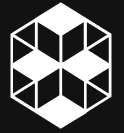Cement fiber boards, also known as fiber sheets or simply fiberboard, is a versatile building material made from a combination of cement, cellulose fibers (usually wood pulp), and other additives. Known for its durability, strength, and resistance to various environmental factors, this composite material stands out in the realm of construction and design. Cement Fiber boards come in sheets or panels and find many applications in construction and building projects.
What are the Key Features of using Cement Fiber board?
1. Composition:
- Cement: Provides durability and strength.
- Fibers: Typically sourced from wood pulp, contributing to flexibility and resilience.
- Additives: For specific properties such as water resistance, fire resistance, and dimensional stability, manufacturers may include various additives in the composite material.
2. Strength and Durability:
- They exhibit high strength, making them suitable for load-bearing applications.
- They are resistant to rot, decay, and insects, enhancing their longevity.
3. Fire Resistance:
- One of the notable features is their resistance to fire, making them a preferred choice in applications where fire safety is a concern.
4. Moisture Resistance:
- They are resistant to moisture, reducing the risk of warping, swelling, or mold growth. This makes them suitable for both interior and exterior applications.
5. Ease of Installation:
- These boards are often lightweight, making them relatively easy to handle and install. They may come in various sizes and thicknesses to suit different construction needs.
6. Environment Friendly:
- Although boards contain cement, which requires intensive energy for production, their consideration as environmentally friendly arises from the utilization of renewable cellulose fibers and their long lifespan.
What are the Applications of Cement Fiber Boards?
- Exterior Siding: Commonly used for cladding the exterior of buildings.
- Roofing: As a roofing material, offering durability and resistance to weather elements.
- Flooring: Used as an underlayment or directly as a flooring material in certain applications.
- Interior Wall Panels: Adds strength and stability to interior walls.
- Decorative Elements: Used for decorative architectural elements due to their versatility.
- Cladding: Exterior and interior wall surfaces.
- Siding: Mimics wood appearance with superior durability.
- Partitions: Creates sturdy and customizable room dividers.
- Fireproofing: Known for fire-resistant properties.
- Outdoor Furniture: Durable material for outdoor structures.
- Soundproofing: Improves acoustic properties in walls or ceilings.
- Insulation Backer: Enhances energy efficiency in walls and roofs.
- Mold Resistance: Suitable for areas requiring resistance to mold and mildew.
What are the different types of Cement Fiber Boards?
Flat Cement Fiber Boards:
- Featuring a flat surface, these boards provide versatility for applications such as wall cladding, roofing, siding, and underlayment.

Wood-Grain Cement Fiber Boards:
- Designed to mimic the appearance of wood, these offer the aesthetic appeal of wood siding or cladding, coupled with the durability and low maintenance of cement fiber.
Tile Backer Boards:

- Designed for use as tile backer substrates in wet areas like bathrooms and kitchens, these boards provide a stable and moisture-resistant surface for tile installations.
Fire-Rated Cement Fiber Boards:
- Specifically engineered for fire resistance, these boards are utilized in applications where fire safety is a primary concern, such as fire-rated walls and ceilings.
High-Density Cement Fiber Boards:
- Denser and stronger than standard boards, high-density boards find application in environments where extra strength and durability are required, such as industrial or heavy-use settings.
Roofing Cement Fiber Boards:

- Designed for creating interior partitions and room dividers, these boards are available in various thicknesses and sizes to suit different partition designs.
Polycarbonated Cement Fiber Boards:
- Engineered to improve sound insulation and absorption, acoustic boards are commonly used in environments where noise control is important, such as theaters, auditoriums, and recording studios.

Moisture-Resistant Cement Fiber Boards:
- Enhanced with moisture resistance, these boards are suitable for humid or damp environments, including bathrooms and outdoor applications.
Exterior Grade Cement Fiber Boards:
- Formulated to withstand exposure to the elements, these boards are suitable for exterior wall cladding and siding.
Painted Cement Fiber Boards:
- Some manufacturers offer pre-painted boards in a variety of colors, reducing the need for on-site painting and providing aesthetic options for designers.

From Foundations to Facades: Cement Fibers Redefining Possibilities
Exploring the different types revealed a nuanced selection, each with its own specialized characteristics and advantages. The diverse range ensures tailored solutions for specific project requirements.
The uses of these boards are as diverse as the boards themselves. They find application in exterior cladding, roofing, flooring, and interior partitions, showcasing adaptability across various construction domains. Beyond conventional uses, these boards have become integral in artistic ventures. For providing a resilient canvas for innovative designs while meeting the stringent demands of modern construction standards.
Choosing Cement Fiber Boards for You Through Wishkarma
- Extensive Platform: Wishkarma provides an extensive platform to explore and compare bathroom product options in India.
- Comparison Tools: Dive into a world of choices, compare features, and prices to make an informed decision.
- Extensive Information: Elevate your setup with the comprehensive resources offered by Wishkarma.
To learn more about the products, click on the button below.
For any construction and architectural product or business-related queries feel fre

Tanishk Pandey is a content editor at Wishkarma. Check out this space for more updates.






